
Critical thinking in dance consists of analyzing, synthesizing, interpreting, and evaluating the dance experience or work through observation, reflection, and reasoning in order to make informed judgments and choices to guide one’s decisions and actions.
- Learners express their initial reactions by making personal connections and drawing on previous experiences.
- Learners use initial impressions as a starting point for reflection.
- Learners observe and describe the work or experience in dance to facilitate interpretation, evaluation, and assessment.
- Learners determine how the elements of the dance are used, manipulated, and organized on the basis of observations, evidence, and analytical criteria.
- Learners analyze the work or experience in dance while considering different perspectives and interpretations through listening, dialogue, questioning, and research to establish a common understanding.
- Learners give and justify their interpretations, preferences, and evaluations of work or experiences in dance in order to make informed judgments and choices.
- Learners generate, co-construct, and weigh criteria to evaluate the artistic experience or work.
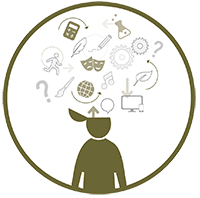
Creativity in dance is the ability to generate, imagine, develop, and transform ideas in order to invent, innovate, find solutions, or create an artistic work.
- Learners embrace ambiguity and are open to emerging and spontaneous ideas.
- Learners demonstrate curiosity, open-mindedness, flexibility, boldness, perseverance, and resilience.
- Learners generate ideas from a variety of sources (e.g., personal experiences, feelings, emotions, memories, observations, knowledge, current events, imagination, etc.) for creating dance.
- Learners build on the ideas of others to create dance.
- Learners experiment and develop ideas iteratively using dance language (e.g., elements and principles, terminology, techniques, tools, etc.).
- Learners evaluate, revise, refine, and share the artistic work in response to self-reflection or peer feedback.
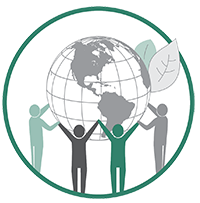
Citizenship in dance is linked to the ability to engage with cultural, social, political, environmental, and economic issues through artistic practices to facilitate a more humanitarian and sustainable world.
- Learners address and reflect on complex issues (ecological, social, political, and economic) in the creation, interpretation, and appreciation of dances.
- Learners recognize the impact of principles of equity, human rights, and social justice on artists and their work.
- Learners explore the interconnectedness among themselves, others, and the natural world through works and experiences in dance.
- Learners examine how dance influences, comments on, and challenges identity, social, political, and cultural discourses by examining diverse viewpoints, experiences, and world views.
- Learners value other cultures, languages, and beliefs, and cultivate empathy, respect, inclusion, and compassion in order to navigate and negotiate the complexities of the contemporary world through dance experiences.
- Learners realize their potential through their artistic contributions.
- Learners engage with the arts community (e.g., artists, events, demonstrations, organizations, associations, community resources, innovations, etc.) and propose equitable solutions for the well-being of self, others, and the natural world.
- Learners apply ethical practices (e.g., copyright, intellectual property, etc.) to the creation, sharing, and consumption of dances.
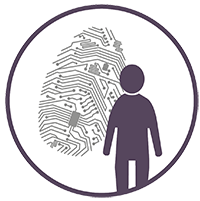
Connection to self in dance includes the development of one’s identity, physical and spiritual well-being, resilience, autonomy, confidence, and perseverance. Practising dance helps learners transform and develop, and it increases their self-esteem, motivation, and sense of belonging.
- Learners identify what contributes to their well-being in order to understand themselves better and to recognize their interests, values, strengths, challenges, and needs.
- Learners learn about the factors that shape their identity through dance experiences.
- Learners self-regulate, self-evaluate, and reflect on the dance experience to improve themselves.
- Learners set and pursue artistic goals for their learning in dance, their well-being, and their future.
- Learners adapt to new experiences and renew their perception of self and the world with hope and perseverance.
- Learners recognize their role and the ways in which dance shapes personal, cultural, and artistic identities and enhances life, learning, leisure, and work.
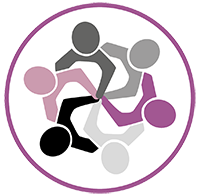
Collaboration in dance is about learning from each other and working together toward a common goal to co-construct meaning using artistic language and processes related to dance.
- Learners recognize and respect that others may have different perspectives, ideas, interpretations, and opinions about dance experiences.
- Learners understand that drawing on others’ ideas can enrich their learning in dance and deepen their thinking.
- Learners share their ideas and perspectives while valuing those of others.
- Learners apply the conventions of artistic performance (e.g., presentation, performance, etc.) by practising active listening.
- Learners give and accept feedback on their ideas and those of others.
- Learners share responsibilities and occupy various roles within a team.
- Learners engage with the community (e.g., artists, events, organizations, associations, community resources, etc.) to develop learning opportunities in dance.
- Learners engage in the collective purpose or common goal while co-constructing dance works and experiences with peers.
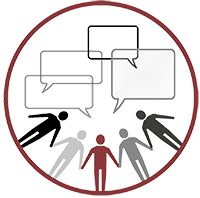
Communication in dance is based on interaction with others or with a dance, enabling one to express or interpret messages, ideas, or emotions, and to respond to them using artistic languages and processes.
- Learners use dance language (e.g., elements, forms, terminology, techniques, tools, etc.) to communicate ideas.
- Learners use various modes (e.g., oral, visual, sound/audio, media, gestural, symbolic, tactile, and spatial) and tools (ICT, digital, etc.) according to the learning context.
- Learners recognize the impact of their contributions to dance on the development of their identity and relationships.
- Learners determine the artistic intent of a work, taking into account the context and target audience.
- Learners seek to understand the messages in their dance experiences through observation, active listening, questioning, and reflection.
- Learners examine and understand the ways in which dance can communicate aspects of the person, culture, history, traditions, values, issues, and events.
- Learners deeply engage the body, senses, and imagination to express and communicate thoughts and feelings through dance language.
- Learners make connections and build relationships through dance experiences.
- Learners recognize the communicative power of dance in building community.





